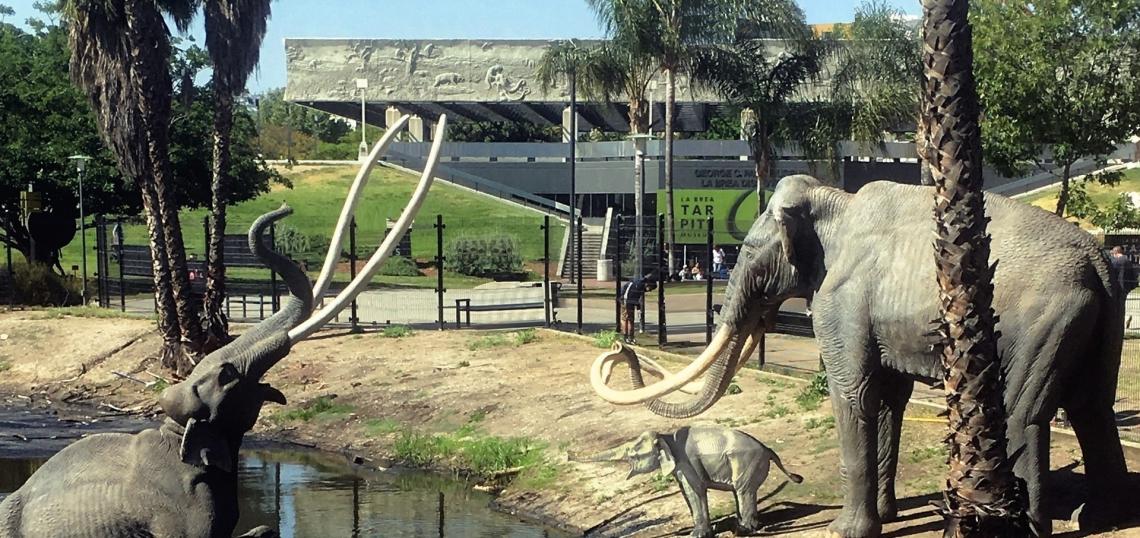It looks like two more Miracle Mile landmarks are poised to receive a big makeover.
Yesterday, the Natural History Museums of Los Angeles County announced the start of a long-term initiative to renovate its 12-acre campus in Hancock Park, which is highlighted by the La Brea Tar Pits and the George C. Page Museum.
“The La Brea Tar Pits and the Page Museum are the only facilities of their kind in the world—an active, internationally renowned site of paleontological research in the heart of a great city, and a museum that both supports the scientists’ work and helps interpret it for more than 400,000 visitors a year," said Dr. Lori Bettison-Vega, President and Director of the Natural History Museums. "We are excited to seize this once-in-a-lifetime opportunity to not just renovate these facilities thoroughly but also to think deeply about how to make them function as well for neighbors and guests over the next 40 years as they have for the last 40—perhaps, even better."
Three architect-led teams will compete for the distinction of leading the master planning effort, including Dorte Mandrup, Weiss/Manfredi, and Diller Scofidio + Renfro.
Dorte Mandrup, based out of Copenhagen, leads a team which includes landscape architect Martha Schwartz Partners, visual designers Kontrapunkt, executive architect Gruen Associates, and engineering firm Arup.
Weiss/Manfredi's team includes graphic designer Michael Beirut, paleobotanist Dr. Carol Gee, artist Mark Dion, and designer Karin Fong of Imaginary Forces.
Diller Scofidio + Renfro - best known locally as the architecture firm behind The Broad contemporary art museum - leads a team which includes landscape architects Rana Creek and Walter Hood.
The short list of teams was selected through a process which began in March 2019; all three firms are expected to develop conceptual approaches for the project, which will be unveiled for public comment in August 2019. The Natural History Museums expect to make a final decision in late 2019.
The winning team will be tasked shaping the future of two of Los Angeles' best known landmarks.
The La Brea Tar Pits - billed as the world's only active paleontogical research facility located in a major urban area - is a prominent landmark on the Miracle Mile. It has been an active research facility since 1913, and has produced millions of samples dating back 50,000 years.
The George C. Page Museum, which opened in 1977, was designed by architects Frank Thornton and Willis Fagan. In addition to a collection that includes more than 2 million specimens, the museum features sculptures by Manuel Paz surround the museum, portraying Ice Age landscapes and animals. Burrowed into the ground, the building features a sloping, crass-covered exterior. But while this design choice preserved more of Hancock Park's greenery, it has also made it difficult to expand and modify the museum.
Renovation plans for the La Brea Tar Pits and Page Museum follow the ongoing construction of the Academy of Motion Picture Arts and Sciences' $388-million museum, located at the intersection of Wilshire Boulevard and Fairfax Avenue. Additionally, the Los Angeles County Museum of Art is preparing to embark on a renovation of its own - a $650-million project that would controversially demolish several existing buildings to create a new structure designed by architect Peter Zumthor.
Construction is also underway for an extension of Metro's Purple Line subway, which will feature a new stop near all three museums at Wilshire and Fairfax.
- Mid-Wilshire (Urbanize LA)







